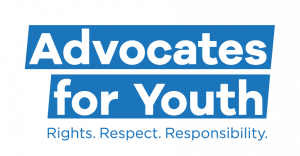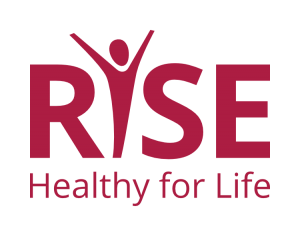Why do we need to use a variety of teaching strategies when teaching sex education? Which ones work best, and why? What can go wrong, and what can we do about it? This training will help instructors answer all of these questions, and feel more competent in delivering engaging and interactive sex education.
Training Hub
The Sex Education Collaborative Training Hub lists trainings for sex educators, facilitators, and other professionals on best practices for sharing important information with clients and the public. From teaching anatomy inclusively to effectively addressing bias in the classroom to addressing racial justice and equity in sex education, the Training Hub includes trainings, technical assistance, and policy support from state, regional, and national leaders in the field of sex education.
Please note: The Training Hub includes both in-person and online professional trainings. If you see a training you are interested in and it isn’t listed as virtual, please reach out directly to any of our members to find out what's possible!
Trainings Offered by State-Based and National Organizations
Displaying results 96 - 100 of 154Teaching Strategies for Sex Education
- Indicator 1 (K-12): Demonstrate three techniques to create an inclusive and affirming learning environment. (S)
- Indicator 1 (K-12): Demonstrate the ability to build rapport with students. (S)
- Indicator 2 (K-12): Demonstrate three student-centered instructional approaches that support a variety of learning styles. (S)
- Indicator 3 (K-12): Explain the differences between positive vs. shaming approaches to teaching sex education.
- Indicator 5 (K-12): Describe three effective strategies for practicing skills with students.
- Indicator 1 (K-12): Explain three reasons why it is important to respond to every question students ask when teaching sex education.
- Indicator 2 (K-12): Demonstrate the ability to effectively respond to three different types of challenging questions. (S)
Cardea provides a range of TA services to support school districts in the adoption and implementation of sound sexual health education policies and procedures. Through direct services, training, and capacity building, Cardea assists districts in adopting best practices, building the capacity of their faculty and staff, and engaging their parents and community. TA begins with the dissemination of policy, research, practices, and resources through peer-learning communities/communities of practice. Additional individualized district TA supports system changes, capacity building, training and education that results in significant changes to practices within a district and changing community perceptions and norms.
Serving Everyone: Providing Sexual & Reproductive Health Services to LGBTQ+ Youth
What can be done to ensure that youth who identify as LGBTQ+ are being treated with respect and dignity by health center staff and providers while receiving sexual and reproductive health services? Tons! Review some LGBTQ+ language, meet Aliyah and Jamell, two adolescents who identify as LGBTQ+, and start action planning!
- Indicator 2 (K-12): Define sexual orientation and sexual identity, including that everyone has both.
- Indicator 3 (6-12): Explain the difference between sexual orientation, sexual behavior, and sexual identity.
- Indicator 4 (K-12): Demonstrate the use of inclusive and affirming language. (S)
- Indicator 5 (K-12): Demonstrate the ability to intervene effectively in homophobic and other bullying comments and actions. (S)
- Indicator 6 (K-12): Explain three ways that LGBQ+ youth are at disproportionate risk for health disparities.
- Indicator 7 (K-12): Identify three credible, medically accurate, youth-friendly resources that can provide information or support related to sexual orientation.
- Indicator 8 (K-12): Explain why it is essential to include positive portrayals of LGBQ+ people in lessons.
- Indicator 9 (K-12): Demonstrate three strategies that can be used to include positive portrayals of LGBQ+ people in lessons. (S)
- Indicator 2 (K-12): Demonstrate the use of inclusive and affirming language. (S)
- Indicator 3 (K-12): Define gender identity and sex assigned at birth.
- Indicator 4 (K-12): Explain how gender identity and gender expression are distinct from each other and from sexual orientation.
- Indicator 5 (K-12): Demonstrate the ability to intervene effectively in transphobic, sexist, misogynistic and other gender-related bullying comments and actions. (S)
- Indicator 6 (K-12): Explain three ways that transgender and gender expansive youth are at disproportionate risk for health disparities.
- Indicator 7 (K-12): Identify three credible, medically accurate, youth-friendly resources that can provide information or support related to transgender and gender expansive people.
- Indicator 8 (K-12): Explain why it is essential to include positive portrayals of transgender and gender expansive people in lessons.
- Indicator 9 (K-12): Demonstrate three strategies that can be used to make lessons affirming for transgender and gender expansive people. (S)
Advocates staff provides technical assistance, training and resources to national, state, and local organizations regarding youth-centered reproductive and sexual health/rights/justice public policy and communications. Policy staff draft model legislation and policy briefs, track and provide in-depth policy analysis, and can support partners in building out advocacy strategies to improve policies and practices at the federal, state, and local levels. In addition, communications staff can assist with talking points, public speaking training, and training regarding media outreach. Staff is also available to assist organizations wishing to raise the visibility of young people and their experiences and needs through social or traditional media. For more information about public policy assistance contact Diana@advocatesforyouth.org. For more information about communications assistance contact Emily@advocatesforyouth.org
Addressing the Needs of LGBTQ Youth
The ability to provide services for lesbian, gay, bisexual, transgender and queer or questioning (LGBTQ+) youth begins with an understanding of the nature of gender and sexual orientation, correct terminology, basic knowledge of the “typical” experiences of the population, and an awareness of the increased risk factors experienced by these youth. In this workshop, participants will have an opportunity to explore this important content and identify strategies for providing welcoming and affirming services appropriate for LGBTQ+ youth. The facilitator will share an overview of the theory, current issues, and research-based strategies important when working with LGBTQ+ populations. Participants will then begin to identify practices that support effective service design and delivery and will lead to the most inclusive and impactful practices. Participants also strategize ways to incorporate these practices into their services and settings.
Objectives of this course:
- Examine the key theories and terminology around gender identity/expression and sexual orientation.
- Define the stages of “coming out,” i.e. self-awareness and identity disclosure.
- Identify increased risk factors for LGBTQ+ youth.
- Strategize effective ways to work with and support LGBTQ+ youth.
- Identify resources for LGBTQ+ youth.
- Develop a personal plan of action for positively addressing the needs of LGBTQ+ youth.
Visit ETR's Training & TA Form to submit your request and receive cost information.
- Indicator 1 (K-12): Demonstrate three techniques to create an inclusive and affirming learning environment. (S)
- Indicator 1 (K-12): Explain how availability of supportive school staff, presence of Gay-Straight Alliances (GSAs), LGBQ-inclusive curricular resources, and the presence of comprehensive, enumerated anti-harassment school policies are related to improved school climate for students of all sexual orientations.
- Indicator 4 (K-12): Demonstrate the use of inclusive and affirming language. (S)
- Indicator 5 (K-12): Demonstrate the ability to intervene effectively in homophobic and other bullying comments and actions. (S)
- Indicator 6 (K-12): Explain three ways that LGBQ+ youth are at disproportionate risk for health disparities.
- Indicator 8 (K-12): Explain why it is essential to include positive portrayals of LGBQ+ people in lessons.
- Indicator 9 (K-12): Demonstrate three strategies that can be used to include positive portrayals of LGBQ+ people in lessons. (S)
- Indicator 1 (K-12): Explain how availability of supportive school staff, presence of Gay-Straight Alliances (GSAs), gender-inclusive curricular resources, and the presence of comprehensive enumerated anti-harassment school policies are related to improved school climate for students of all gender identities.
- Indicator 2 (K-12): Demonstrate the use of inclusive and affirming language. (S)
- Indicator 5 (K-12): Demonstrate the ability to intervene effectively in transphobic, sexist, misogynistic and other gender-related bullying comments and actions. (S)
Additional Trainings offered by out-of-state organizations
- ‹ previous
- 9 of 49
- next ›
Accessible Sex Ed Training for Facilitators
This workshop is designed for sex ed and family life educators who want to make their programs more accessible to people with a variety of disabilities, particularly autistic people and people with intellectual and developmental disabilities (IDD).
Adding these skills to your toolbox makes affirming, inclusive education more accessible for all participants..
“Accessible Sex Ed” also covers how to talk with caregivers about the importance of complete, fact-based education for all people, especially neurodiverse folx.
- Indicator 1 (K-12): Explain three reasons why it is important to respond to every question students ask when teaching sex education.
- Indicator 2 (K-12): Demonstrate the ability to effectively respond to three different types of challenging questions. (S)





